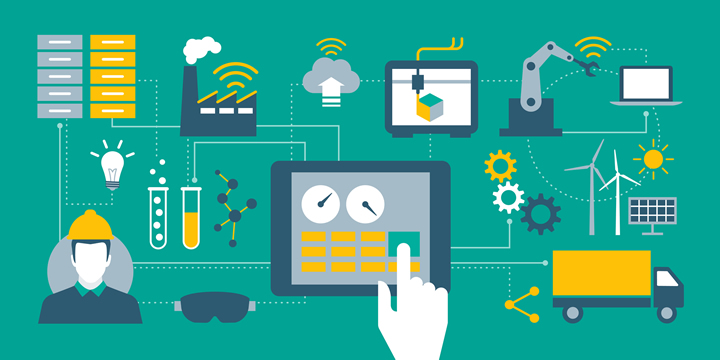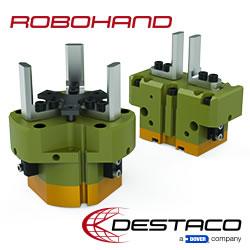Automation Is a Game Changer for Supply Chains

This is not your grandfather’s supply chain. While there are a host of modern technologies making things more efficient, and in many ways better, there are just as many challenges causing delays. Even with basic supply chain automation in place, a lot more is necessary to create a reliable and error-free system. The reason why is simple. It’s because there are still a lot of human hands in the pot, or in other words, there are still too many manual steps and processes taking place.
That’s not to say the entire supply chain, from end to end, will be automated in full. There will always be people involved in its operations. However, some degree of automation is essential to keeping things moving, whether that includes autonomous machinery, smart and IoT technologies, AI-driven systems, or advanced analytics with machine learning support. These technologies are an absolute game changer, but we need to take a closer look at the biggest supply chain automation trends to understand why.
Advanced and Contextual Automation
Basic automation has been around for centuries now, much of it born during the time of the industrial revolution. No one would argue that it wasn’t impactful when it first hit the scene, decades ago, but these days, active solutions need to go above and beyond. It’s not just about conveyor and production line systems that push goods sans human input. Or, machines that can operate on a repetitive loop to assemble, pick, pack, and sometimes even react.
Today’s supply chain calls for contextual automation, driven largely by incoming data, but not after the fact — in real-time. With the right tools — like a machine learning platform — it can empower inventory management, order processing, multi-location administrative duties, supply chain notifications, and so much more.
Consider this scenario. Imagine no bookkeeper or inventory personnel managing a physical or digital spreadsheet to keep track of inventory. Instead, every piece of inventory, from goods to components and supplies, is scanned into a digital system via RFID tags when it comes into the warehouse. As those items move out or are shipped, the tags are scanned again, keeping an accurate count of stock. When the quantity is low, at a certain threshold, the system automatically orders more from a vendor or supplier, and it arrives before there are any disruptions. It’s all automated, with no manual interactions involved.
But taking that a step further, the same solutions can be used to organize the warehouse, locate goods, send notifications to all involved parties, and yes, even to track those items from their source to your warehouse, all the way back out to store shelves, sellers, or customers. It’s a fully transparent system, with continuous movement, driven entirely by digital and powerful solutions. And those technologies never tire, never sleep, and never lose performance or accuracy so long as they’re being maintained appropriately.
Even better, with enough data at the helm, artificial intelligence and ML technologies can pick apart and identify trends or patterns, allowing them to fully predict incoming events. Events such as higher customer demand for goods, major or minor shortages, and auxiliary concerns — such as a huge spike in demand because of a natural disaster or similar happenstance. It means that supply chain players are better prepared overall, even for sudden events that wouldn’t normally influence operations.
Here are some other ways contextual automation can improve the supply chain:
- Digital twin technologies to simulate or understand operations
- AI-modeling to identify business risk and incoming events
- Back-office automation for billing, receipts, and data capture
- Customer support through robotic process automation (RPA)
- Much more
Of course, we’ll continue to see even more supply chain automation trends as the technology grows with the industry.
Operational Supply Chain Automation
Digital and AI-driven solutions are fantastic, but they can’t do the physical work that humans do — or can they? When paired with advanced robotics, also sometimes called collaborative robots or cobots, they can automate physical and practical action in the supply chain.
Some examples include picking, storing, and sorting inventory within a warehouse. Moving, transporting, or handling heavy loads and goods. Providing support to human workers, like collecting goods stored high up, or locating items in seconds within a sprawling facility. Cleaning spills, messes, or hazards. Caring for various goods and items, including monitoring temperatures, humidity, and more.
There’s so much they can do, and we’re barely scratching the surface. That’s because today’s robots are so much more capable than anything we’ve ever seen before, and thanks to rapid technology advancements, they get smarter and better every day. From farms to the store, distributors to customers, advanced robots help automate the supply chain in new and innovative ways, and with so much going on today — not the least of which are worker shortages — it’s a welcome change.
Transportation Supply Chain Automation
It’s been a long time coming, but we’re now seeing autonomous vehicles, including supply chain vehicles, on the open roads. We’ve heard for years and years at this point that self-driving vehicles are the future and they’re going to change the world. While that may be true, it certainly hasn’t been a change that’s happened overnight, it’s taken quite some time to get here. And yet, the autonomous vehicle market is projected to grow from $1.6 billion in 2021 to $11 billion by 2028, including trucks, drones, transport vehicles, and more.
Thanks to modern technologies, and massive troves of data, it stretches far beyond driverless vehicles even. Logistics solutions can help discern optimal travel routes, reduce fuel costs and travel times, and also vastly improve the general operation.
Take items that belong in cold storage, for instance. When transporting these goods, one needs to be aware of travel times, and potential road events like accidents, traffic, and other delays. Any one hiccup could result in spoiled or contaminated goods, especially with a limited scope of cold storage support. A transport vehicle that breaks down could result in an entire trailer full of perishables being spoiled. But with the right logistics technologies, a nearby transport could swing by and pick up those goods before they’re spoiled. Better yet, preventative maintenance solutions can be used to identify mechanical or vehicular issues before they appear — preventing disruptions or failures altogether.
Where Is All of the Data Coming from?
All of this talk about supply chain automation, driven largely by data, glosses over one very important point: Where is the data and information coming from in the first place?
The answer is from smart, IoT (Internet of Things) devices, installed strategically throughout the supply chain. They feed the information that AI and machine learning platforms need to react and make in-the-moment decisions. They also inform logistics and tracking solutions for inventories, notifications, and much more. It drives many of the supply chain automation trends we’re seeing.
IoT devices come in many forms, from small, internet-connected temperature sensors to larger technologies, like robotics with proximity sensors built-in. Even trucks in a fleet can be equipped with a host of IoT devices, like GPS trackers, temperature sensors and control devices for cold storage, and so on.
Supply Chain Automation Trends for the Future
Everything happening now, everything we’re seeing in today’s supply chain, is going to have a direct impact on the future of operations, meaning it’s not out of the question to expect a fully-autonomous supply chain within the next decade, maybe less.
With the right technologies and strategies in place, we could effectively mitigate challenges and disruptions. Not just by creating a wholly efficient system but also by developing new reactionary and predictive measures for events that come down the pipeline. Preparation is the key to making that happen, and AI-driven platforms can certainly help us achieve it.
From advanced and contextual automation to transportation and back-office opportunities, supply chain automation is unquestionably changing the game.
Comments (0)
This post does not have any comments. Be the first to leave a comment below.
Featured Product

